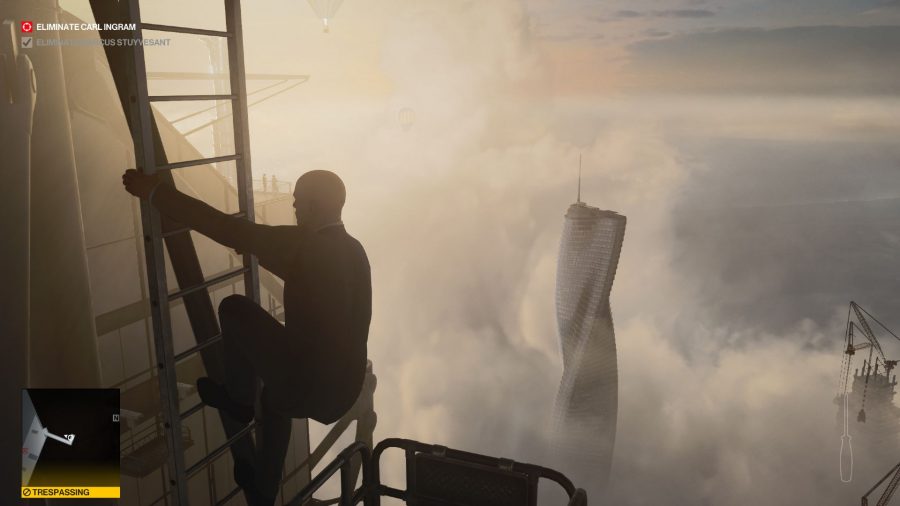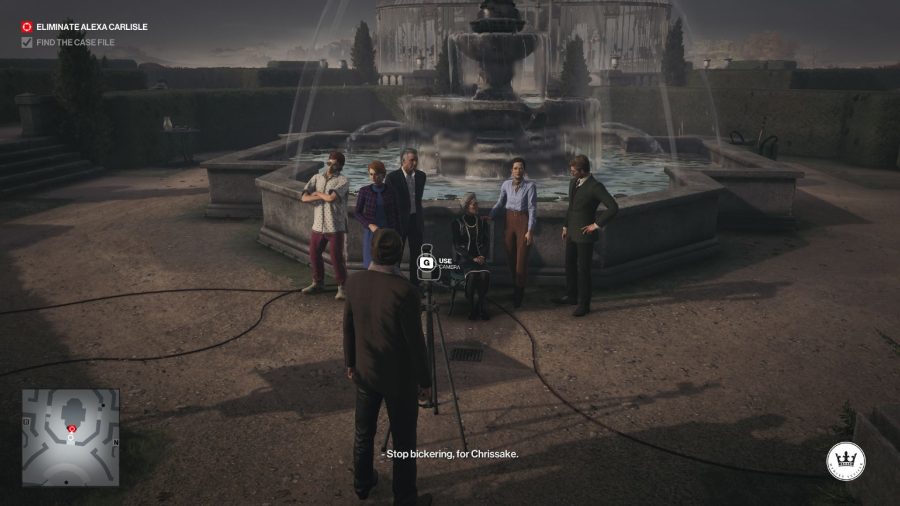Our Verdict
Another fine outing for Agent 47, and a fitting, hopefully temporary, farewell to one of the best stealth series of the last decade.
This should come as no surprise, but Hitman 3 is very good. It’s more confident than its predecessors, and while that confidence mostly manifests itself in devious new assassination methods and improved storytelling, Hitman 3 does occasionally miss the mark.
If you’re familiar with Hitman 2 then Hitman 3 is a very similar package: five sprawling sandbox missions in five stunning, exotic locations, plus one mission that’s much smaller in scope. It’s plenty for a first playthrough – easily seven hours from start to finish – but the rebooted Hitman series is all about exploration, both of a sandbox level and the mechanics of murder contained therein. It’s taken closer to 25 hours to achieve the coveted Silent Assassin, Suit Only badge on all six missions, and I can imagine that ticking off all the challenges for each location will take another 25.
How those hours are distributed is a little more uneven this time around. The opening two levels, Dubai and Dartmoor, are new Hitman to the letter. They’re massive, open, and packed with variety. Truly understanding how each one works takes hours of save-scumming to ascertain patrol times, target routines, CCTV positions, and the locations of key tools. To help you get to grips with each level quickly, developer IO Interactive offers ‘mission stories’ – guided and highly stylised means of executing your target that will introduce you to key areas and help you understand the flow of the level.
Dubai’s cloud-piercing skyscraper contains three largely separate areas connected by staff corridors, external maintenance routes, and backstage areas. Its structure and layout are incomprehensible when you first take control of Agent 47, but with the help of Mission Stories you can put the jigsaw together to reveal a path to your targets – one knotted in the labyrinthine staff corridors, the other holed up in the penthouse. Unlike in Hitman 2, IO Interactive is keen to throw players in the deep end with Dubai.
Dartmoor is next up, an opulent English manor house complete with ancestral burial grounds and a feuding family filling the halls with bickering and bitterness. There’s an obvious nod to Knives Out in one of the mission stories, which has you assuming the role of a private investigator and interviewing the whole wretched family one by one. Tempting, but I opt to disguise myself as a photographer and gather everyone outside for a portrait, somewhere picturesque, like in front of a fountain… with my target sitting on a metal chair near a leak and some exposed wiring from my lighting rig.
Related: Here are the best sandbox games on PC
Without wanting to give too much away, the family is gathered for a funeral, so for my escape I head over to the burial grounds, place a rake near the unoccupied grave, and wait for the undertaker to Sideshow Bob his way into the next life. I take his clothes and the keys to his hearse, bury him, and then calmly make my escape.
Shortcuts that permanently unlock more efficient paths through a level when opened are one key addition, but they slot in so seamlessly among the unlockable starting locations and hidden stashes that they never really feel all that new or important. Likewise, Agent 47 can now bring a camera into levels with him, which is primarily a hacking tool, however, aside from being remote there’s nothing that sets it apart from a lockpick: hold down a button and you’re in.
The third mission, set in a Berghain-like nightclub just outside Berlin, is where things get interesting, but not necessarily better. You’re without a mission handler, which means no mission stories to guide you through the location. Additionally, you don’t know who your marks are, and you’ll need to take out at least five targets before heading for the exit.
Having all these tools stripped away from you and not knowing who you’re up against creates easily the most atmospheric and claustrophobic mission in the rebooted Hitman series. The downside is that it’s easy to get lost or locked into one portion of the map. There are extravagant means of executing some of the targets, but having no guide means you have to invest a lot of time learning every aspect of a location before hoping to pull one of these assassinations off. I’ve probably spent the most time in the Berlin mission, but it’s still the mission I know least about.
The fourth mission, set in the city of Chongqing, is a return to form with its densely packed apartment blocks, mesmerising neon aesthetic, and cartoonish villain double act. The mission stories here are some of the most scripted in the series, but also the most lavish. Signing up for some human experimentation and then frying your target’s brain Scanners-style? Oh, yes please. Taking a tour of a super-secret organisation under the guise of a high-ranking member, and then using the shiny new tech they show you to literally obliterate your target? Delicious.
A vineyard outside the Argentinian city of Mendoza is the final sandbox you’ll visit in Hitman 3. There’s a vineyard you can sneak through, you can head into the throng of the main party and then sneak through staff areas, or if you spot the right NPC near the start, you can circumvent the lot and carve a far more direct path to both of your targets.
Mendoza is as sprawling and complicated as you make it – I spent nearly two hours clearing it for a Silent Assassin, Suit Only run and then charged through it again in barely 20 minutes. And there is so much more to learn, like: why is there a cannon I can load and fire? How do I access Don Yates’ safe? And is it possible to kill someone using the ginormous grape-presser? Or, better yet, how many people can I kill at once with the presser?
All of that potential is precisely why the final act is so disappointing. Five gorgeous and robust assassination sandboxes culminate in a linear slog from one end of a train to the other. There is some nuance to how you navigate it, but almost everything that makes the rebooted Hitman series great is absent in its closing mission. To IO Interactive’s credit, the story in Hitman 3 is delivered more consistently and thoughtfully than in the previous games, so when you do reach the final mission there is at least something other than murderous curiosity driving you towards the finish line.
Storytelling is perhaps the biggest area of improvement for IO Interactive. Rather than stitching each sandbox together with some cutscenes, IO is starting to tinker with the sandboxes themselves. The Berlin mission is the perfect example: the entire level is characterised by the absence of a handler, both narratively and in its impact on the now-familiar rhythms of the new series.
As Agent 47, you’re so used to being pointed at bad guys and told how to meticulously eliminate them that it feels equal parts liberating and bewildering to enter a mission rudderless. Other missions feature dialogue that directly leads into cutscenes, reminding you of the overarching narrative right in the middle of play. Later you’ll even be joined by a friendly face to take down a target.
It’s a shame then, that this is likely the last we’ll see of Agent 47 for quite a long time, just as IO is hitting its creative stride. While they don’t always pay off, these tweaks to the formula finally have me invested in Hitman’s story, and the inconsistencies they introduce make some levels, like Berlin, among the most memorable in the series. They do also lead to a disappointing finale, but the good generally outweighs the bad. Hopefully, this experimentation finds fertile ground in IO’s upcoming Bond game, because I don’t want to wait for another Hitman trilogy to play another stealth game this good.




